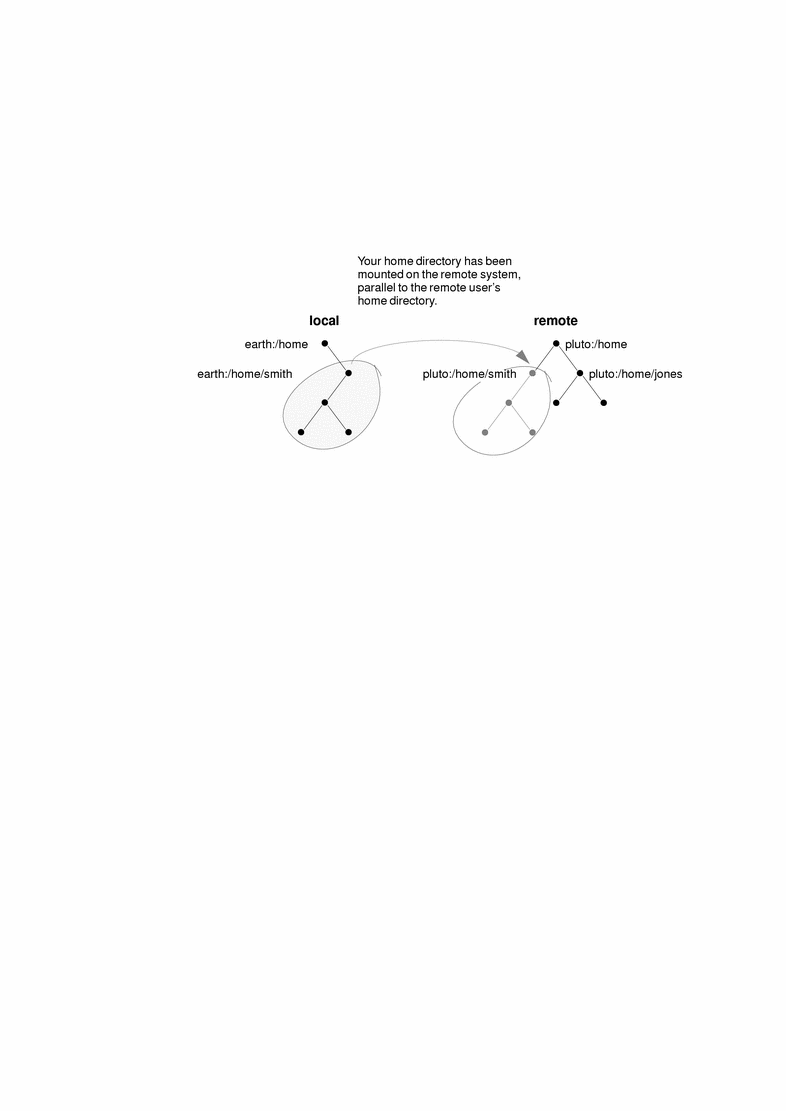What Happens After You Log In Remotely
When you log in to a remote system, the rlogin command attempts to find your home directory. If the rlogin command can't find your home directory, it will assign you to the remote system's root (/) directory. For example:
Unable to find home directory, logging in with / |
However, if the rlogin command finds your home directory, it sources both your .cshrc and .login files. Therefore, after a remote login, your prompt is your standard login prompt, and the current directory is the same as when you log in locally.
For example, if your usual prompt displays your system name and working directory, and when you log in, your working directory is your home directory, your login prompt looks like this:
earth(/home/smith): |
Then when you log in to a remote system, you will see a similar prompt and your working directory will be your home directory, regardless of the directory from which you entered the rlogin command:
earth(/home/smith):rlogin pluto . . . pluto(/home/smith): |
The only difference is that the name of the remote system would take the place of your local system at the beginning of the prompt. Where, then, is the remote file system? It is parallel to your home directory, as shown below:

In other words, if you cd to /home and then run ls, this is what you'll see:
earth(home/smith): cd .. earth(/home): ls smith jones |
- © 2010, Oracle Corporation and/or its affiliates
